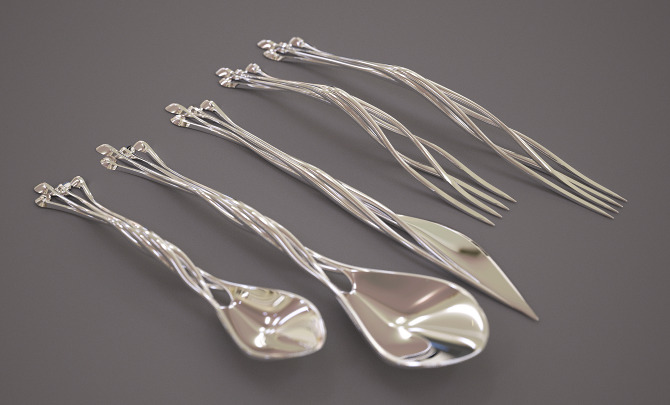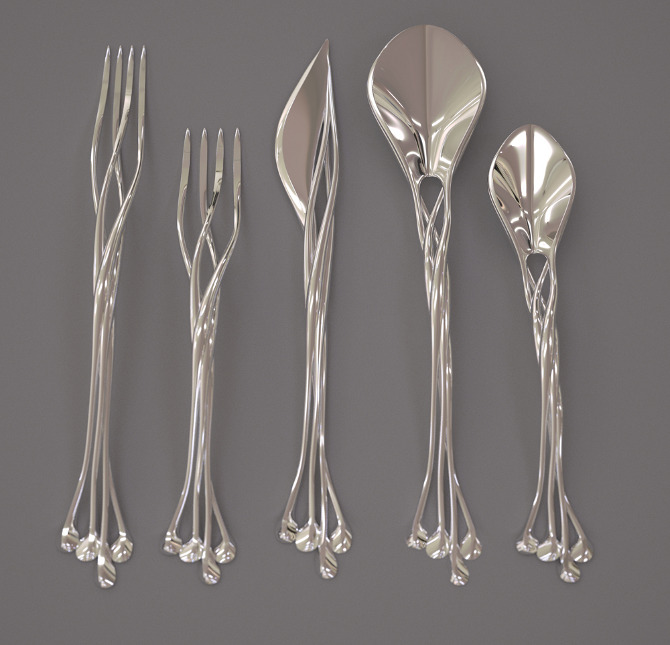We’re checking out one of 3D artist Francis Bitonti’s latest ventures: Setae Flatware, and realized there might be a lot more to this.
Bitonti is a well-known 3D artist whose works we’ve seen many times and even featured as one of our Designs of the Week. Recently, the works from his studio are made from 3D printed metal.
One of the works is the Setae Flatware, a set of knives, forks and spoons made using metal 3D printing. Bitonti describes them as follows:
Four independent strands cohere and separate creating a landscape of fibers nestled into the hand. The separation and cohesion of these long linear elements is used to produces local difference to beautifully satisfy the demands of a functional set of flatware. The Flatware is manufactured with the latest 3D metal printing technology and finished with sterling silver.
They are indeed beautiful and unique.
But this leads to the question, is flatware a possible market for metal 3D printing? Consider the following:
- Flatware are relatively small objects requiring little metal to produce, thus the 3D printed cost should be relatively low (with emphasis on the “relatively”)
- Flatware is a platform upon which artistic and creative designs are easily applied
- Everyone needs (and has) flatware, but there are many who wish to have unique, higher-priced flatware for their personal collections
- Metal 3D printing can produce designs not reproducible using conventional manufacturing
All these reasons to us suggest that it may be possible to create a business or two focused on specialized flatware designs such as the one pioneered by Bitonti shown above.
Designers, this may be worth some thought.



